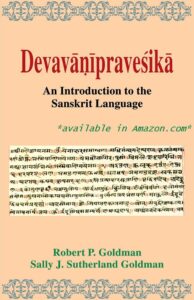Ongoing and future svādhyāya courses
Welcome to Edwin’s svādhyāya-śālā

On the ongoing request of those outside the academic community, especially yoga practitioners, non-specialists interested in Indian philosophy, general spiritual seekers, and the intellectually curious, Edwin conducts periodic, online studies of primary yoga philosophy texts (svādhyāya), in the mood of making Sanskrit knowledge systems accessible to anyone interested. The courses are free, and all are welcome to avail of them, but those who have the means and the inclination are welcome in accordance with dharma to voluntarily give an honorarium or donation of their choice, as per tradition (guru dakṣiṇā), half of which will go to Edwin’s charity in India.
Click here to make a donation. Thank you!
Please sign-up here to receive updates about upcoming virtual teachings.
If you had signed-in even years ago, please, kindly, do not sign-in twice!
To unsubscribe, please click here.
The link for the workshop is:
https://rutgers.zoom.us/my/edbryant?pwd=NENRRVhkZVJzNzI0SmhIbEEwM1ZDUT09
this link is not going to be sent to your email address!
Before clicking on the link above, open Zoom and clicking on your photo (top right) select Settings on the menu, then click on AUDIO (menu on the left) and tick the ‘ MUTE MY MIC when joining` option to assure you do not interrupt the meeting.
Sanskrit Grammar Course
(ongoing May 2024 – May 2025)
first meeting: MAY 3rd- 6pm to 8 pm
To register for the course please contact Alice: yogawithwanderingalice@gmail.com
She will add you to the list so that you will receive communications pertaining to the ongoing developments of our Sanskrit study.
Also email Alice if you wish to unsubscribe at any point.
As always, the svādhyāya is by voluntary donation – everyone is requested to give something according to means and inclination (no one is monitoring) – half of which goes to the gōśālā charity outlined on the website (if anyone wishes to see my receipts contact me privately).
Sanskrit Grammar Book
All svādhyāya video links available here.
0. April 6th- Introduction to course
1. May 3rd –6pm to 8 pm EST
2. May 17th- 6pm to 8 pm EST
3. May 31st– 1pm to 3pm EST – 7pm to 9pm GMT
4. June 14th- 2pm to 4pm EST – 7pm to 9 pm UK –
5. June 28th- 1pm to 3pm EST – 6pm to 8pm UK –
6. July 12th- 12pm to 2pm EST- 5pm to 7pm UK
7. SATURDAY – 27th July 1pm EST / 6pm UK. TIME and DAY CHANGE!!
Before clicking on the Zoom link, open Zoom app and clicking on your photo (top right) select Settings on the menu, then click on AUDIO (menu on the left) and tick the ‘ MUTE MY MIC when joining` option to assure you do not interrupt the meeting.
8. Aug 9th- TIMES onwards to be determined!
9. Aug 23rd-
10. Sept 6th-
11. Sept 20th –
Dates and times onwards to be determined.
—————————————————
Next Svādhyāya session: Yoga Sūtras
padas III & IV
date to be determined
(between mid July and mid Sept 2024)
Svādhyāya text
INVOCATIONS
Schedule (all times are in EST):
For previous svādhyāya courses uploaded online, click here.
Edwin’s Charity in India
